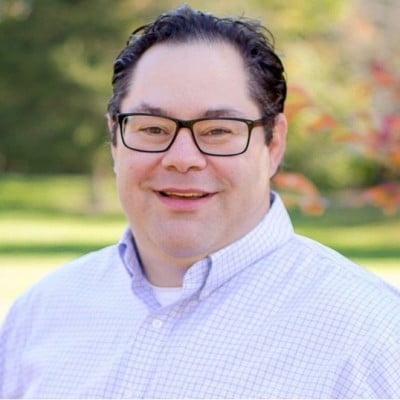Barrett Media produces daily content on the music, news, and sports media industries. To stay updated, sign up for our newsletters and get the latest information delivered straight to your inbox.
Just over 50 miles northeast of Des Moines, Iowa sits the city of Marshalltown. The city is home to KFJB, one of Iowa’s oldest radio stations. Founded by the head of the Marshall Electric Company, Earl Peak, the station would run a cable three blocks to Marshalltown High School and is credited with doing the first remote broadcast of a high school football game in the 1920’s.
“What they decided to do…was they created a three-block long microphone cable, ran it through the ditch to the football field and then that is credited with the first live sports broadcast on the radio,” said current station Owner/General Manager Todd Steinkamp. “Before then they would have announcers call in to the studios and then the studio announcers would relay the information to the listeners.”
These days, that very same station is still covering Marshalltwon High School sports, but now in addition to football, they cover just about every other sport. And, in addition to games airing on the radio, they are also now airing on KFJB-TV, which airs on YouTube.
Steinkamp said while this was something they had thought about and talked about, like a lot of things, it was Covid that finally made it happen.
“Covid was the catalyst for this really because [high schools] were limited to the amount of parents that could go to a game and the grandparents couldn’t go and you had to sit six feet apart, so we wanted to take it to the next level,” he said. “So, we just said, all right, let’s investigate and see what it would take. So, we put together a checklist. I talked to a couple of different radio stations who were doing video coverage. I just got online and started doing a lot of searching and everything and figured out the initial equipment that we would need to pull this off.
“I got a play-by-play announcer, I needed a couple camera people, I needed a producer, so when we initially started, we were talking three or four people, got our cameras, got our equipment and we started off not knowing a single thing about video.”
Steinkamp said it was a bit scary making the leap into video and “there were definitely stumbling blocks,” but that they did make the conscious decision to do it right. He said there was an initial investment of around $8,000 for equipment, but he felt confident if they delivered a quality product, the advertising support would be there to make the risk pay off.
“We made the decision to say if we’re going to do this, we want to do it well. I don’t want it to look hokey, I don’t want someone to tune in and think it’s kids running it. So, we made that conscious decision to start off with that, we were going to do it top tier. That first year was trial and error. We got the basic equipment and then every time we got a new sport season, we would figure something else out.”
He said they have added more cameras and eventually swapped out any equipment that needed to be wired together with wireless equipment. “We can literally go anywhere on the field or on the court and get better shots,” Steinkamp said.
As for staffing, Steinkamp said it varies by sport, but for football they will have two announcers, a producer who operates the video software switching cameras, inserts graphics and runs replays, two people on cameras, a statistician and someone manning the controls at the radio station. For some smaller sports, Steinkamp says it can be done with as few as three total people.
As for the monetization, the first year they did it, there was no additional charge to sponsors who purchased one of the radio sponsorships. Steinkamp said he did that, so he didn’t have to hold up any promises since he had no idea what to expect. Now, with around 1,500 subscribers and games getting a few thousand views at times, he is able to upsell sponsors for the video side.
Steinkamp said they continue to learn as they go. One thing he cautioned people about using YouTube as a platform is that you have to be careful no copyrighted content gets on the broadcasts. When they are set up and the stadium is playing popular music, YouTube has flagged KFJB’s content for airing copyrighted material. He said it’s something most people wouldn’t think about and if you get too many strikes from YouTube on it, it could lead to them suspending your account.
Not only are fans taking in the games at their homes, but there are some local bars you can also walk into and see the broadcasts of the games on their televisions from the YouTube feed. Steinkamp says many of the families will reach out and let them know how and where they are watching the games and a lot of them get a kick out of casting the feed to their screens at home. “You can literally watch our broadcasts on YouTube on a 72-inch TV if you want to,” Steinkamp said.
Steinkamp loves local radio and says the 100+ years of covering Marshalltown High School athletics is something they are very proud of and are excited to see it continue to grow through video. He sees it as a win not just for the station but for the fans, sponsors, coaches, players and the school.
“The local angle is definitely the way we wanted to approach this. It was to support the kids, and we’ve had so many parents come to us and say, ‘you guys treat these kids like they’re superstars’ and they get the biggest kick out of it. Coaches have told us after the games are done if they have an away game, they’ll all jump on the bus and the next thing you know, it’s quiet on the bus because they’re all back watching our footage of their games. That’s cool to hear.”

Dave Greene is the Chief Media Officer for Barrett Media. His background includes over 25 years in media and content creation. A former sports talk host and play-by-play broadcaster, Dave transitioned to station and sales management, co-founded and created a monthly sports publication and led an ownership group as the operating partner. He has managed stations and sales teams for Townsquare Media, Cumulus Media and Audacy. Upon leaving broadcast media he co-founded Podcast Heat, a sports and entertainment podcasting network specializing in pro wrestling nostalgia. To interact, find him on Twitter @mr_podcasting. You can also reach him by email at Dave@BarrettMedia.com.



